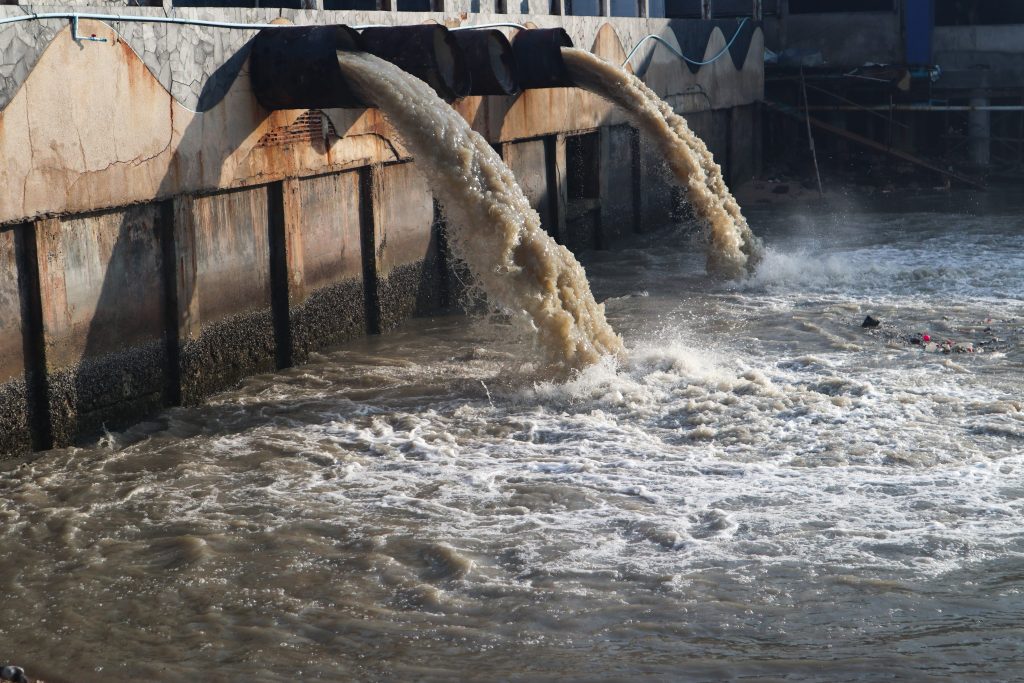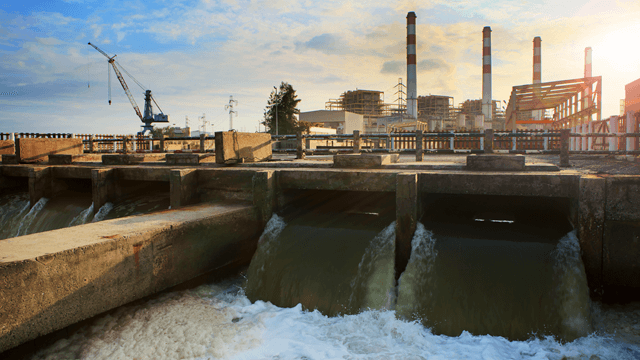Industrial Waste Water Treatment-- Sustainable Solutions for Industrial Water Monitoring
Wiki Article
Key Methods in Hazardous Waste Water Therapy Procedures
The treatment of commercial wastewater is a crucial aspect of ecological monitoring, involving an array of methods created to minimize the effect of impurities. From the essential physical techniques that separate solids to the sophisticated chemical and organic processes that target details toxins, each method plays a crucial duty in accomplishing water quality criteria. Additionally, improvements in technologies such as membrane layer filtration and progressed oxidation processes use innovative options for enhancing treatment efficacy. Comprehending just how these methods interconnect and their ramifications for sustainability increases vital questions regarding the future of wastewater monitoring in industry.Physical Treatment Approaches
Just how properly can physical therapy techniques deal with the complexities of industrial wastewater? Physical therapy techniques play a crucial duty in the initial phases of wastewater management, focusing mainly on the removal of solids and big particulates. Methods such as filtering, flotation, and sedimentation are vital for minimizing the concentration of suspended solids, thus improving the effectiveness of subsequent therapy procedures.Sedimentation entails the gravitational settling of solids, permitting the separation of larger products from the wastewater. This approach is specifically efficient in clarifying water prior to chemical or organic treatments. Filtration, on the various other hand, makes use of numerous media to catch particulate issue, making sure that smaller sized impurities are removed. This strategy can be tailored to suit different sorts of commercial effluents, creating more clear effluent streams.
Additionally, flotation protection methods, which make use of air bubbles to lift suspended solids to the surface area for elimination, are efficient in dealing with wastewater with high concentrations of fats, oils, and oils. Generally, physical treatment techniques serve as an important initial step in the comprehensive monitoring of commercial wastewater, making sure that the tons on succeeding treatment stages is minimized and enhancing overall therapy effectiveness.
Chemical Treatment Strategies
While physical treatment methods prepared for efficient wastewater administration, chemical therapy strategies are vital for dealing with the extra intricate pollutants often located in industrial effluents. These techniques use different chemical agents to speed up, reduce the effects of, or oxidize damaging materials, making sure a more comprehensive removal of contaminants.
One usual approach is coagulation and flocculation, where chemical coagulants such as aluminum sulfate or ferric chloride are included in promote the gathering of put on hold particles. This process improves solid-liquid separation, minimizing turbidity and improving water high quality. In addition, neutralization processes are used to adjust the pH of wastewater, utilizing bases or acids to neutralize acidic or alkaline streams, specifically.
Oxidation-reduction responses play an essential function in degrading organic contaminants and virus. Chemical oxidants like chlorine, ozone, or hydrogen peroxide are used to damage down intricate natural substances, making them much less hazardous or a lot more biodegradable. In addition, progressed oxidation processes (AOPs) combine several oxidation strategies to enhance contaminant removal effectiveness.
Biological Treatment Processes
The efficiency of wastewater treatment is dramatically boosted by organic therapy procedures, which harness the all-natural metabolic tasks of microorganisms to disintegrate organic issue and remove pollutants. Industrial Waste Water Treatment. These processes primarily entail aerobic and anaerobic food digestion, each customized for details kinds of wastewaterAerobic treatment processes utilize oxygen to support microbial development, promoting the breakdown index of natural toxins right into carbon dioxide and water. Typical methods consist of turned on sludge systems, where oygenation tanks help with the blending of wastewater with microbes, and dripping filters, which encourage biofilm growth on media surface areas.
Alternatively, anaerobic treatment processes take place in the absence of oxygen, making use of anaerobic microorganisms to decompose raw material, resulting in biogas production, an eco-friendly power source. Anaerobic digesters are frequently utilized in industrial setups for this purpose, properly reducing the volume of sludge while producing useful biogas.
The selection of a biological therapy method depends upon wastewater characteristics, treatment objectives, and regulatory requirements. The assimilation of organic processes in wastewater treatment not just enhances contaminant removal performance but also promotes sustainability by lessening chemical use and supporting resource recuperation.
Advanced Oxidation Processes

Typical AOP methods include Fenton's photocatalysis, ozonation, and reagent. Fenton's reagent, a mix of hydrogen peroxide and ferrous iron, militarizes the formation of hydroxyl radicals, making it reliable for treating wastewater containing phenolic compounds and various other stubborn compounds.
AOPs supply several benefits, consisting of reduced sludge production and the ability to deal with wastewater with high concentrations of organic pollutants. The application of AOPs calls for cautious consideration of functional specifications and cost-effectiveness, making certain that these sophisticated methods are suitably integrated right into existing wastewater treatment systems.
Membrane Purification Technologies

Microfiltration is effective for removing put on hold solids and germs, while ultrafiltration targets smaller sized natural molecules and infections. Nanofiltration connects the void in between ultrafiltration and turn around osmosis, efficiently removing divalent ions and natural substances. Reverse osmosis supplies the highest level of purification, utilized largely for desalination and getting rid of mono-valent ions.
Membrane layer technologies supply numerous advantages, including low energy usage compared to conventional therapy approaches, modular design for scalability, and the potential for water healing and reuse. Challenges such as membrane fouling and the requirement for normal upkeep have to be resolved to make sure system effectiveness. Generally, membrane layer filtering technologies stand for an essential element check of contemporary industrial wastewater treatment approaches, advertising sustainability and resource preservation in water management.
Verdict
In conclusion, industrial wastewater treatment employs a varied range of strategies, including physical, chemical, organic, and progressed approaches. Continued improvements in these approaches will certainly further improve the efficiency and performance of wastewater treatment processes in commercial setups.The treatment of commercial wastewater is a vital facet of environmental administration, including a range of methods made to mitigate the effect of impurities.Exactly how efficiently can physical therapy approaches resolve the complexities of industrial wastewater?Advanced oxidation processes (AOPs) stand for an advanced technique in commercial wastewater therapy, designed to effectively deteriorate natural contaminants that are commonly immune to conventional therapy approaches (Industrial Waste Water Treatment).In conclusion, industrial wastewater treatment employs a diverse variety of techniques, including physical, chemical, biological, and progressed techniques. Proceeded improvements in these methods will additionally boost the efficiency and effectiveness of wastewater therapy procedures in commercial settings
Report this wiki page